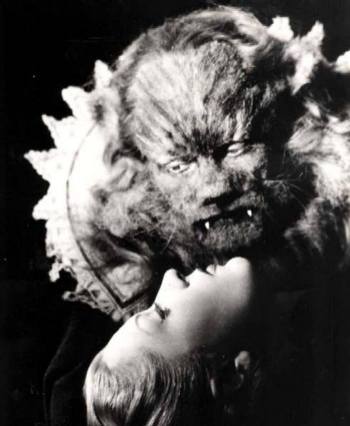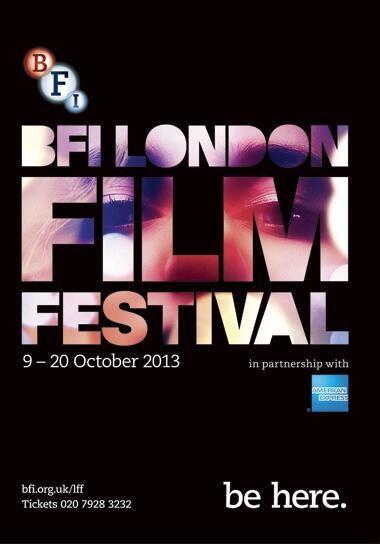Synopsis
The only gift the daughter of a rich merchant asks from her father, when he returns from a long journey, is a red rose. Her sisters laugh at her, but once this unexpected wish is granted, everything becomes enchanting. A man is changed into a beast, the house has spells cast upon it, and, in the end, Prince Charming appears to delight Beauty.
Credits
Director (1)
Actors (10)
Production and distribution (3)
Full credits (17)
- Executive Producer : André Paulvé
- Adaptation : Jean Cocteau
- Screenwriter : Jean Cocteau
- Dialogue Writer : Jean Cocteau
- Director of Photography : Henri Alekan
- Music Composer : Georges Auric
- Assistant Director : René Clément
- Editor : Claude Ibéria
- Sound recordists : Jacques Carrère, Jacques Lebreton
- Costume designers : Marcel Escoffier, Pierre Cardin, Christian Bérard
- Author of original work : Jeanne-Marie Leprince De Beaumont
- Voice : Jean Cocteau
- Camera operators : Robert Foucard, Raymond Letouzey, Henri Tiquet
- Production Manager : Emile Darbon
- Continuity supervisor : Lucile Costa
- Production Designers : René Moulaert, Lucien Carré, Christian Bérard
- Music Performer : Roger Desormière
Watch this movie
Watch The Beauty and The Beast in VOD
| Platforms | Model | Price | Quality |
|---|
Sorry, your search returned no results.
| Platforms | Model | Price | Quality |
|---|
Sorry, your search returned no results.
| Platforms | Model | Price | Quality |
|---|
Sorry, your search returned no results.
| Platforms | Model | Price | Quality |
|---|
Sorry, your search returned no results.
Technical details
- Type : Feature film
- Genres : Fiction
- Sub-genre : Fantasy, Literary adaptation
- Themes : Love
- Production language : French
- Production country : France (100.0%)
- Original French-language productions : Yes
- Nationality : 100% French (France)
- Production year : 1946
- French release : 29/10/1946
- Runtime : 1 h 26 min
- Current status : Released
- Visa number : 782
- Visa issue date : 05/06/1945
- Approval : Yes
- Production formats : 35mm
- Color type : Black & White
- Aspect ratio : 1.37
- Audio format : Mono
Box-office & releases
Box Office
This content is for registered users only.
Are you a member? Please login to view content.
TV broadcasting
This content is for registered users only.
Are you a member? Please login to view content.
International releases
| Country | Distributor | Buyer | Release date | Titre local |
|---|
Sorry, your search returned no results.
News & awards
Selections (9)
Awards (1)
About
Production
Beauty and the Beast is a 1946 French romantic fantasy film adaptation of two French fairy tales. The first fairy tale, from which the film took both its title and most of its content, was written by Jeanne-Marie Le Prince de Beaumont and published in 1757 as part of a fairy tale-anthology (French: Le Magasin des Enfants, ou Dialogues entre une sage gouvernante et ses élèves, London 1757). From the second fairy tale, (French: La Chatte Blanche) by Marie-Cathérine d'Aulnoy, published almost sixty years previously in one of the earliest fairy tale anthologies of France, (French: Les Contes des Fées, Paris 1697-1698), only a single but very evocative narrative motive was taken: servants, previously magically reduced to their arms and hands, with these still performing all servants' chores.
Directed by French poet and filmmaker Jean Cocteau, the film stars Josette Day as Belle and Jean Marais as Avenant and The Beast and Prince Ardent. It is widely considered one of the finest fantasy films of all time.
The plot of Cocteau's film revolves around Belle's father who is sentenced to death for picking a rose from Beast's garden. Belle offers to go back to the Beast in her father's place. Beast falls in love with her and proposes marriage on a nightly basis which she refuses. Belle eventually becomes more drawn to Beast, who tests her by letting her return home to her family telling her that if she doesn't return to him within a week, he will die of grief.
This film version of La Belle et la Bete adds a subplot involving Belle's suitor Avenant, who schemes along with Belle's brother and sisters to journey to Beast's castle to kill him and capture his riches while the sisters work to delay Belle's return to the castle. When Avenant enters the magic pavilion which is the source of Beast's power, he is struck by an arrow fired by a guardian statue of the Roman goddess Diana, which transforms Avenant into Beast as Belle declares her love for the Beast and reverses the original Beast's curse. When the Beast comes back to life and becomes human at the end, he transforms into a Prince Charming with Avenant's handsome features, but without his oafish personality.
In the original tale, Belle has three brothers, whereas in the film, she only has one. Also in the original tale, Belle and her family are forced to move to a farmstead in the countryside after the loss of their fortune; in the film, they continue to live in their townhouse. Also in the original tale, the sisters are turned into statues as punishment for their cruelty, whereas in the film, they are merely forced to carry the train of Belle's gown at her wedding, though it is implied that they will now be her servants.
Jean Marais originally suggested to Cocteau for the beast to have a stag's head, obviously remembering a detail in the fairy tale (French: La Chatte blanche): The knocker at the gate to the castle of the princess/The White Cat has the form of a roe's foot. While this suggestion followed the narrative lines of its fairy tale origin and would have evoked the mythical echo of Cernunnos, the celtic stag-headed god of the woods, Marais' idea was nonetheless refused by Cocteau who feared that in the eyes of modern cinema audiences a stag's head would turn the beast into a laughing-stock.
The score was composed by Georges Auric, and the cinematography by Henri Alekan. Christian Bérard and Lucien Carré covered production design. The exteriors were shot in Rochecorbon (Indre-et-Loire).
The film is notable for its surreal quality and its ability to use existing movie technology to effectively evoke a feeling of magic and enchantment. The set designs and cinematography were intended to evoke the illustrations and engravings of Gustave Doré and, in the farmhouse scenes, the paintings of Jan Vermeer.
Reception
Upon the film's December 1947 New York City release, critic Bosley Crowther called the film a "priceless fabric of subtle images,...a fabric of gorgeous visual metaphors, of undulating movements and rhythmic pace, of hypnotic sounds and music, of casually congealing ideas"; according to Crowther, "the dialogue, in French, is spare and simple, with the story largely told in pantomime, and the music of Georges Auric accompanies the dreamy, fitful moods. The settings are likewise expressive, many of the exteriors having been filmed for rare architectural vignettes at Raray, one of the most beautiful palaces and parks in all France. And the costumes, too, by Christian Bérard and Escoffier, are exquisite affairs, glittering and imaginative."[2] According to Time magazine, the film is a "wondrous spectacle for children of any language, and quite a treat for their parents, too"; but the magazine concludes "Cocteau makes about a half-hour too much of a good thing—and few things pall like a dream that cannot be shaken off."
In 1999, Chicago Sun-Times critic Roger Ebert added the film to his "Great Movies" list, calling it "one of the most magical of all films" and a "fantasy alive with trick shots and astonishing effects, giving us a Beast who is lonely like a man and misunderstood like an animal." A 2002 Village Voice review found the film's "visual opulence" "both appealing and problematic", saying "Full of baroque interiors, elegant costumes, and overwrought jewelry (even tears turn to diamonds), the film is all surface, and undermines its own don't-trust-a-pretty-face and anti-greed themes at every turn." In 2010, the film was ranked #26 in Empire magazine's "100 Best Films of World Cinema".
Source : Wikipedia






































































